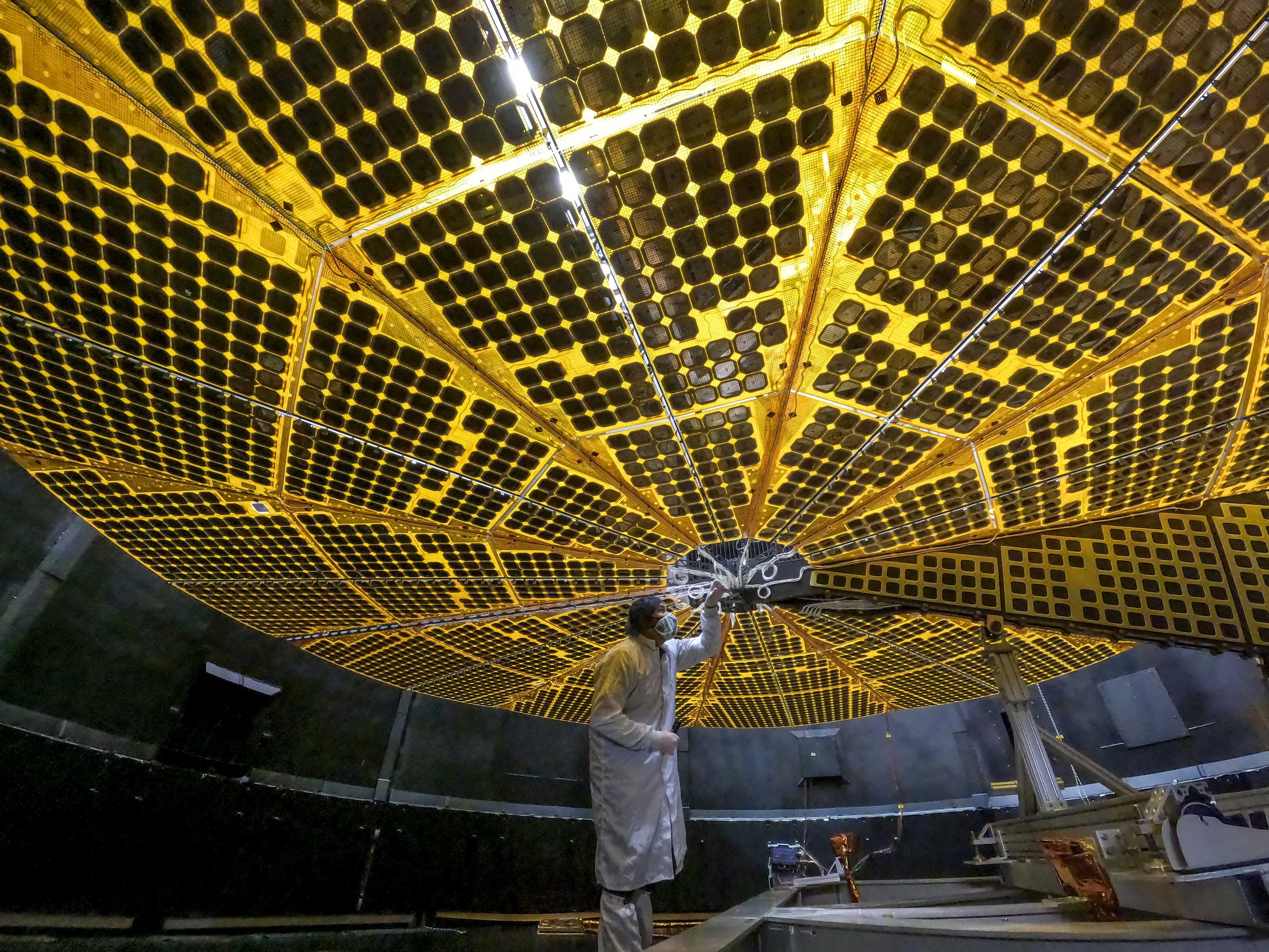NASA eyes solar array glitch on new Lucy asteroid spacecraft

A new NASA spacecraft headed for the Trojan asteroids near Jupiter has a small issue with its solar panels, but the probe isn't in immediate danger, space agency officials said.
The Lucy spacecraft, which launched smoothly on Saturday (Oct. 16) atop a United Launch Alliance Atlas V rocket, began unfolding its two massive solar panels about an hour after launch. At the time, all appeared to go smoothly, but now it seems one of the circular panels, each of which is nearly 24 feet (7 meters) wide, didn't quite secure itself in place properly.
"NASA's #LucyMission is safe & stable," Thomas Zurbuchen, NASA's associate administrator for science, wrote in a tweet posted on Sunday (Oct. 17). "The two solar arrays have deployed, but one may not be fully latched. The team is analyzing data to determine next steps. This team has overcome many challenges already and I am confident they will prevail here as well."
Related: Meet the 8 asteroids NASA's Lucy spacecraft will visit
Lucy's solar panels are a crucial part of the spacecraft's ambitious mission to get scientists their first-ever up-close look at asteroids that orbit in the same path as Jupiter, called the Trojans. When Lucy is making its flybys, it will break the record for the farthest from the sun a spacecraft has run exclusively on solar power.
NASA is currently evaluating the situation to determine how to proceed, according to an agency statement, which notes that the spacecraft's other systems are all operating as expected.
"Lucy's two solar arrays have deployed, and both are producing power and the battery is charging," according to the statement. "While one of the arrays has latched, indications are that the second array may not be fully latched."
Get the Space.com Newsletter
Breaking space news, the latest updates on rocket launches, skywatching events and more!
Lucy isn't in any immediate danger, the agency emphasized.
"In the current spacecraft attitude, Lucy can continue to operate with no threat to its health and safety," the statement reads. "The team is analyzing spacecraft data to understand the situation and determine next steps to achieve full deployment of the solar array."
Lucy was always going to stick close to Earth in the immediate aftermath of launch: The spacecraft's first task is to complete two flybys of Earth that will give it the speed necessary to reach the outer solar system. Its first asteroid flyby, of a main-belt asteroid, will occur in 2025.
All told, Lucy is expected to have observed eight different asteroids by 2033, seven of them belonging to the mysterious Trojans. Scientists hope that the data will help them better understand both the diversity of these asteroids and the early days of our solar system.
Email Meghan Bartels at mbartels@space.com or follow her on Twitter @meghanbartels. Follow us on Twitter @Spacedotcom and on Facebook.
Join our Space Forums to keep talking space on the latest missions, night sky and more! And if you have a news tip, correction or comment, let us know at: community@space.com.

Meghan is a senior writer at Space.com and has more than five years' experience as a science journalist based in New York City. She joined Space.com in July 2018, with previous writing published in outlets including Newsweek and Audubon. Meghan earned an MA in science journalism from New York University and a BA in classics from Georgetown University, and in her free time she enjoys reading and visiting museums. Follow her on Twitter at @meghanbartels.









